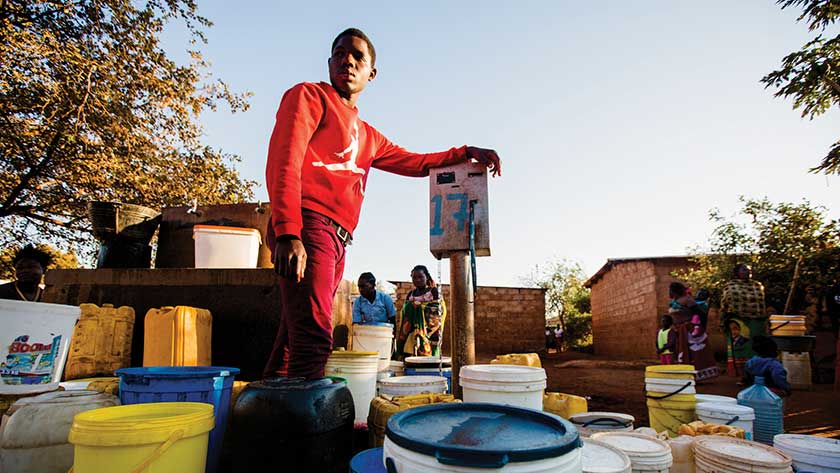What do you think of when you think about improving water and sanitation? No doubt the first thing that springs to mind is a tap; probably followed close after by a toilet.
These are the visible aspects of efforts to meet Sustainable Development Goal 6: “Ensure availability and sustainable management of water and sanitation for all.” But they aren’t the most important aspects.
Without systems in place to manage water and sanitation services, clean water and safe sanitation cannot reach the people who need it most. And right now, there’s a lot of work to do to improve systems.
Next week the UN’s High-Level Political Forum will convene in New York to assess progress on the Sustainable Development Goals.
For SDG 6, discussion will revolve around how the world is well behind goals to meet targets. Of all the countries below 95 percent coverage in 2015, only one in five is on track to achieve basic water services for all by 2030. The picture is worse in sanitation, where only one in 10 countries below 95 percent coverage in 2015 is on track to achieve universal access.
This is a real problem because water and sanitation underpin so many other areas of development: health, education, employment, gender equality, and climate resilience.
In cities, where Water & Sanitation for the Urban Poor (WSUP) focuses, inequality is a major issue, with many countries unable to implement policies that target the most vulnerable.
Given that cities and towns will be home to two-thirds of the world’s population by 2050, this rising inequality presents a particular concern. How can we improve systems in urban areas so that water and sanitation services can reach the poorest?
WSUP agrees with the SDG 6 synthesis report that there are three areas where systems can be improved in cities to strengthen access: governance, finance, and capacity development.
Without the right oversight, structure, and incentives there is no direction for comprehensive change. Without unlocking finance, there is little ability to initiate change programs. Without capacity development, change will not be implemented effectively.
We need to focus more on these kind of challenges – the invisible barriers to universal access – rather than the simple, visible areas of infrastructure like taps and toilets.
Fortunately, some progress is evident, and we believe that these examples can serve as guidance for other cities.
In the area of governance, the Bangladesh government took recent steps to introduce a national framework which determines who is responsible for delivering non-sewered sanitation services. That framework is impacting how City Corporations prioritize action in this area. We also believe that the Kenyan water regulator’s revision of the national standards for utilities could have a transformative impact on how utilities reach low-income residents.
In terms of finance: although Burkina Faso is highly dependent on official development finance, it is putting in place the mechanisms for revenue collection. In the urban areas covered by the state-run National Office for Water and Sanitation, infrastructure development, operations, and maintenance are all supported by user fees.
Other cities, meanwhile, are making good progress on introducing sanitation charges on water bills, which enable sanitation improvements to be financed through bills from higher-income residents; or from surcharges on property rates. Maputo, and Ga West, part of Accra, are two urban areas where this is happening.
And in Kenya, we believe that the work of Nairobi City Water & Sewerage Company over the last eight years to create a dedicated Informal Settlements unit is a genuinely impressive story of a service provider building its capacity to serve the poorest residents. That unit and its more than 200 staff has improved the utility’s overall efficiency and effectiveness.
Comprehensive change across entire cities is challenging, but that’s happening in smaller, less complex urban areas. The Indian city of Warangal, home to 100,000, has made significant improvements across a range of issues – from introducing regulations to better manage sanitation, to setting up public-private partnerships to improve public toilets and providing financing for households to purchase toilets.
Citywide change in water and sanitation can be achieved.
It’s not easy, and it’s not quick, but for any chance of achieving SDG6, we need to focus less on the visible, and more on the invisible parts of the challenge.
Find out more about how WSUP works with cities to improve water and sanitation at www.wsup.com.